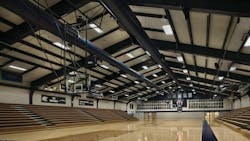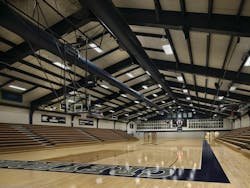LED Retrofits – Smart, Sustainable, and Good for Business
As we look to 2025, the switch from fluorescent to LED light sources will continue to shape the industry. LEDs have been the standard in new construction for years, but thousands of existing buildings still use fluorescent lighting. From an environmental perspective, this has the potential to be problematic. Fluorescent lamps contain mercury, a known environmental hazard, especially when bulbs break or are disposed of improperly.
Legislators and the lighting community are responding. Over the last few years, Canada and many U.S. states (including CA, CO, OR, RI, and VT) have adopted and are enforcing laws banning the sale of fluorescent lamps, with many more states actively considering fluorescent bans. Manufacturers are also obsoleting their fluorescent lamps and ballasts. Electrical contractors and facility managers will soon find it virtually impossible to purchase replacements, and installed lighting in thousands of buildings will need to be upgraded or replaced.
Now is the time to help your customers plan and implement LED upgrades.
For Simple LED Upgrades, Think Retrofit Kits
One cost-effective option at your disposal is to use a LED retrofit kit bundle [new LED lamp(s) and driver(s)] that’s compatible with the existing luminaire. Simply replace the fluorescent lamps and ballasts with LED lamps and drivers. Available from various manufacturers, retrofit kits simplify the process and can often be accomplished without replacing fixtures or pulling new wires.
There are three options for LED retrofits, varying in levels of simplicity, cost, and value:
- With Type A retrofits, LED lamps are used with existing fluorescent ballasts. Type A LED kits may be inexpensive, but the Type A LEDs aren’t compatible with fluorescent ballasts. This incompatibility has been known to burn out ballasts quickly at a time when ballasts are being phased out and replaced by drivers.
- With Type B retrofits, power is re-wired directly to the lamp holders, bypassing the ballast. However, if the luminaire is connected to a lighting control system it will no longer control the converted fixtures, and you may lose control of your lights.
- Type C retrofits are generally considered the best choice for long-term reliability when replacing dimmed fluorescents. Type C retrofit kits bundle compatible LED lamps and drivers. The luminaire retains its dimming and control capabilities, and upgrades can be made to one luminaire at a time or to groups of luminaires.
The Ideal Time for a Full-Scale Lighting Upgrade
Often, the imminent need to replace outdated fluorescent lighting presents the perfect opportunity to reconsider the quality and performance of your lighting system. Control system upgrades can transform lighting from an operational necessity to a valuable building asset.
If the existing lighting system consists of basic switched fluorescents, adding controls as part of an LED upgrade can enhance light quality, flexibility, and energy efficiency. Advanced planning provides the opportunity for substantial cost savings using wireless controllable lighting and lighting controls.
If the current lighting includes a control system, upgrading your luminaires may present the perfect opportunity to to upgrade that control system. Take advantage of the latest smart system technology, including software that gives facility managers access to system data, automated alerts that help eliminate downtime, cloud connectivity, and seamless integration with automated shades and HVAC systems.
Like retrofit kits, installation can be planned according to your budget and maintenance schedule. Add individual wireless fixture controls to make the space more comfortable, adaptable, and valuable over time. Lighting can be programmed (and reprogrammed) from a convenient app to accommodate changing space requirements.
Ask the Big Questions at the Beginning of the Job
Establish lighting performance expectations from facility stakeholders early. Are they simply looking to avoid lighting problems due to outdated equipment, or do they want to improve dimming performance and long-term energy savings? When you fully understand the customer’s goals, fluorescent-to-LED upgrades help you add value and build your relationship with the customer.
Research and select high-quality LED solutions that meet that intent. Retrofit kits may be the key to keeping the lights on today or phasing the transition to LED in over time. Or, if the team is ready to tackle a larger-scale energy savings project, consider lighting and control system upgrades as part of your scope.
The fluorescent era is quickly closing. Introduce your customers to the energy-saving, light-quality improving, control-enhancing power of LEDs in all your commercial projects.
About the Author

Tom Shearer
Systems Sales Engineering Leader, Lutron Electronics
Tom Shearer joined Lutron Electronics in 2001 after graduating from Virginia Tech with a BSEE and background in power electronics. After developing fluorescent dimming ballasts, Tom led the development of Lutron LED driver products to achieve the same control performance as standard light sources on the market. He holds patents in the areas of LED driver technology, and control of tunable white lighting.
Tom is a member of the Illuminating Engineering Society (IES), and the Institute of Electrical and Electronics Engineers (IEEE) and has presented at technical seminars and conferences on the topic of LEDs, LED drivers, and lighting control in general.

